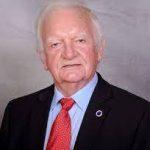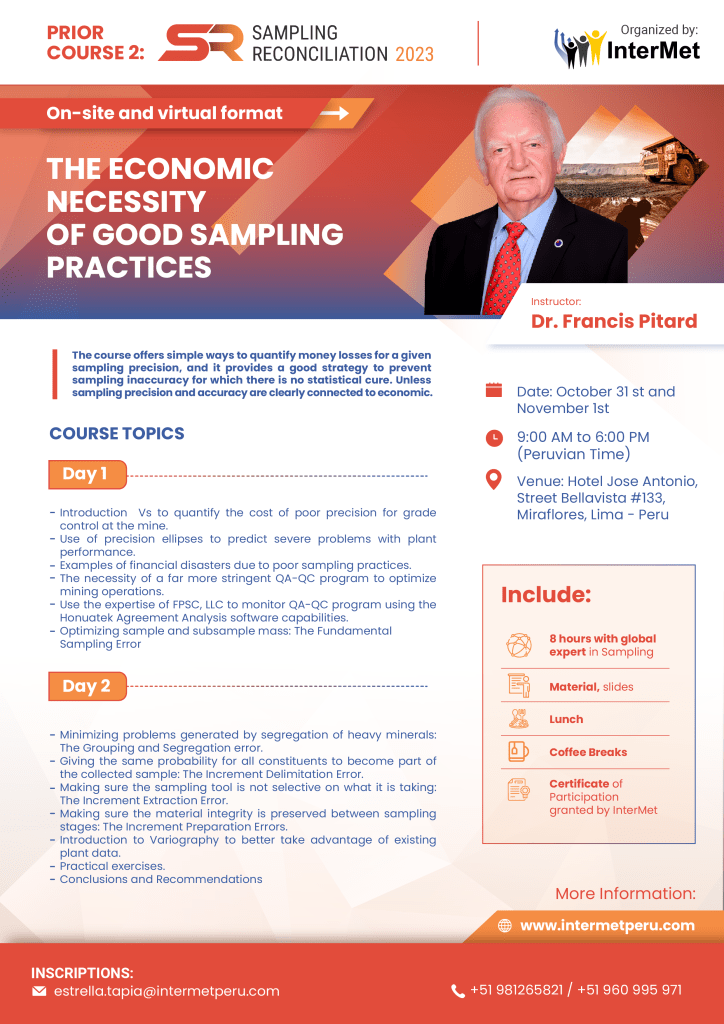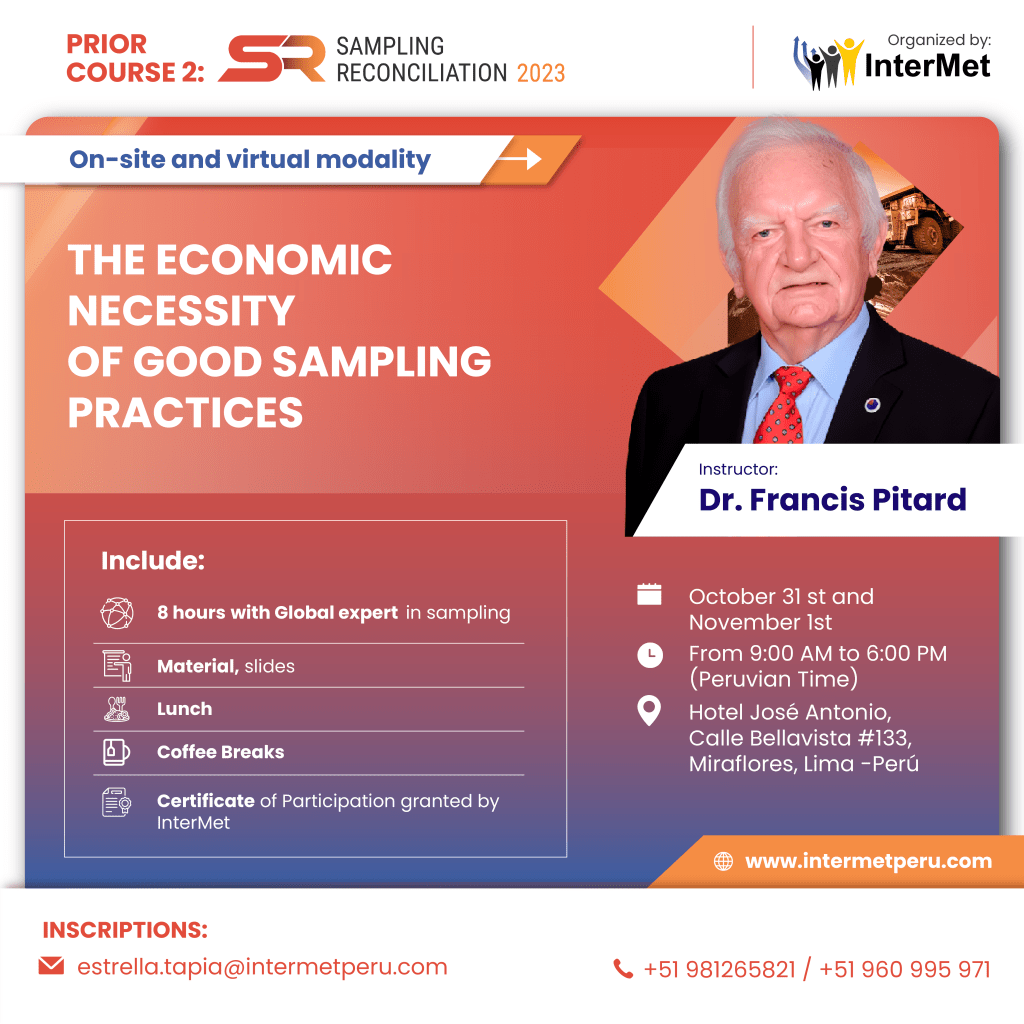INTRODUCTION
For metallurgical accounting there is no substitute for sampling Correctness. This sampling correction is the cornerstone of sampling theory. Stationary cutters and many sampling devices heavily promoted by some well-known manufacturers transgress the most elementary rules of sampling correction, so they cannot and will not work. An in-depth analysis of this problem is presented. Quantifying a sampling bias is an exercise in futility. Many people think that if they can quantify sampling bias, they will be able to decide whether they can live with the bias or not. Unfortunately, sampling biases. Unfortunately, sampling biases are never constant. Moreover, an incorrect sampling system can be biased in several independent ways. This important issue is an overlooked topic that we will discuss below.
COURSE OBJECTIVE
Poor sampling, compounded by poor laboratory subsampling, leads to questionable geostatistics, and creates serious reconciliation problems between the geological model, mine and plant estimates. estimates. These problems also affect the price of raw materials and the validity of environmental assessments. In that sense, the result is a huge loss of money for the company involved, which later evolves into probable litigation. Therefore, it is of vital importance for geologists, miners, metallurgists and chemists, and environmental specialists to extract maximum information from the available data, as large investments and crucial decisions depend on it. Erroneous assessments lead to devastating scenarios such as: Abandonment of viable properties. Exploitation of unprofitable properties. Mismanagement of viable properties. Incompetence in fraud detection. It is critical to quantify the heterogeneity of important components in any new property. Failure to perform adequate testing leads to invalid sampling and subsampling protocols, excessive drilling, and a biased database that would later result in false geostatistics. The following sequence is part of an unavoidable practice: How is the constituent of interest distributed in the material to be sampled? Perform heterogeneity tests to quantify the sampling characteristics of the constituent of interest. Optimize the sampling protocols and the way they are based on the results of the heterogeneity test. Implement protocols using valid sampling equipment: 75% of commercially available sampling equipment will never do the job. Implement a quality control program to control sampling precision and accuracy.
WHAT WILL YOU LEARN IN THIS COURSE?
- The nine types of sampling errors, how they occur and how to minimize them; most people can only list two!
- Sampling correction, so that you can reject sampling systems that will never do a satisfactory job.
- Familiarize yourself with the necessary tests to be performed in mines and plants to optimize all your sampling protocols.
- Select appropriate Data Quality Objectives for operational parameters that deserve continuous monitoring to minimize your operational costs.
- To better appreciate the value of existing time data that allows you to better control any process. This data is valuable to management in identifying structural problems that cause unnecessary financial losses.
- Variography is the key to identifying the various sources of variability that affect routine chronological data. You will discover the power of Chronostatistics.
- Using existing data, variability from sampling and measurement must be clearly separated from process trends and cycles.
- Unless this is done well, continuous process improvement will remain elusive. will remain elusive.
- Careful use of the Moving Average and especially its auxiliary functions can greatly help to minimize the effect of sampling and the accuracy of measurements.
- Relative difference plots can clearly show the presence of conditional sampling and laboratory biases.
- Realize the weakness of the current sampling rules: They are outdated and do not conform to the Theory of Sampling.
- Get up to date on the advances in sampling exhibited during eight
- World Conferences on Sampling and Mixing.

Dr. FRANCIS PITARD
He is an expert consultant in Sampling, Statistical Process Control and Quality Management. He is president of Francis Pitard Sampling Consultants (www.fpscsampling.com) and Technical Director of Mineral Stats Inc. (www.mineralstats.com) in Broomfield, Colorado USA. He provides consulting services in several countries. Dr. Pitard has six years of experience with the French Atomic Energy Commission and fifteen years with Amax Extractive R&D. He has taught Sampling Theory, Statistical Process Control and Total Quality Management at the Continuing Education facilities of the Colorado School of Mines, the Australian Mines Foundation, the University of Chile School of Mines and the University of the Witwatersrand in South Africa. He holds a PhD in Technology from Aalborg University in Denmark. He was awarded the prestigious Pierre Gy Gold Medal for excellence for promoting and educating about Sampling Theory (Cape Town, South Africa, 2009). He is a consultant and instructor for InterMet.

INVESTMENT : USD 900
START DATE :
OCTOBER 31 TO NOVEMBER 01, 2023
HOUR :
9:00AM A 6:00PM (Peruvian Time)
MODALITY :
ON-SITE AND VIRTUAL
PLACE: HOTEL JOSÉ ANTONIO, CALLE BELLAVISTA #133, MIRAFLORES, LIMA - PERU
COURSE INQUIRY FORM
Do not hesitate to contact us and we will immediately guide you in everything you need.
Mail:
estrella.tapia@intermetperu.com
Whatsapp:
+51 960 995 971


